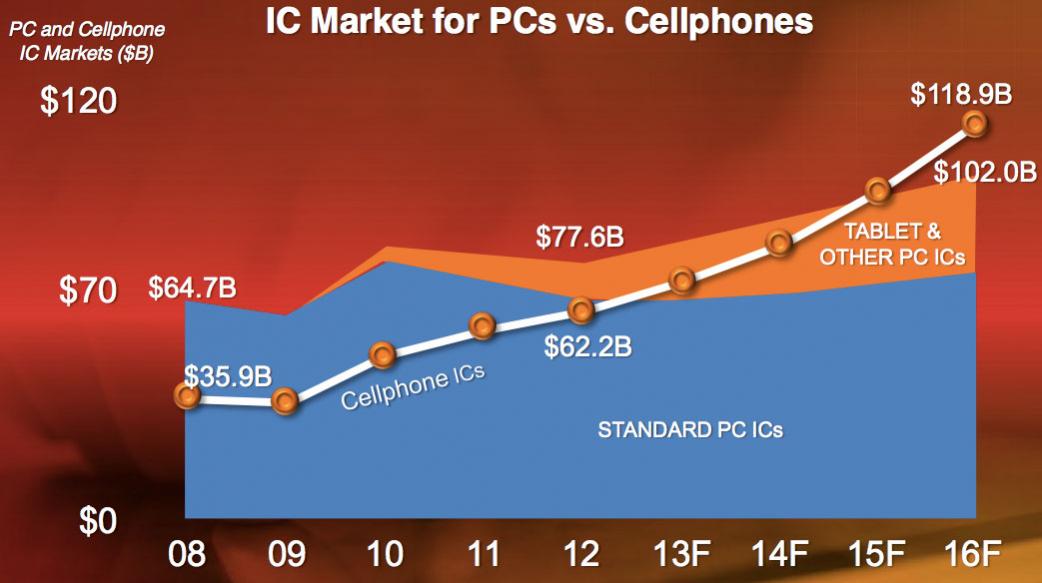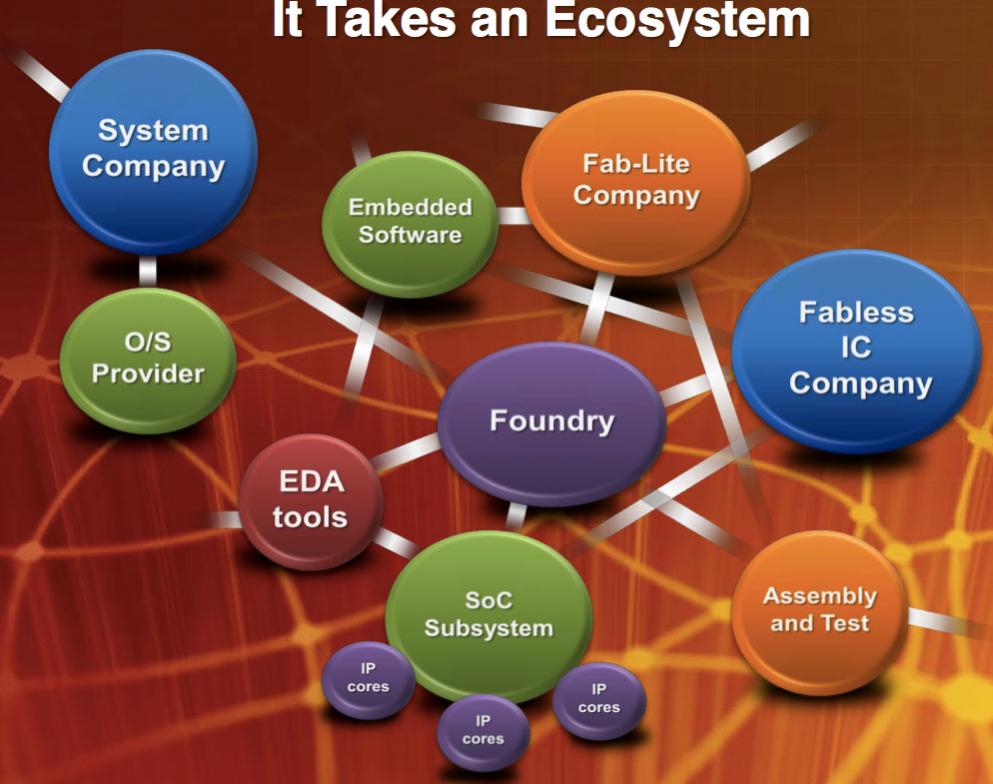The opening keynote to this year’s Semicon West was by Ajit Manocha, the CEO of GlobalFoundries entitled Foundry-driven Innovation In the Mobility Era. It is no secret that mobile applications, especially smartphones and tablets, are the most significant semiconductor market today. It is not just large, it is disruptive. In relatively short periods, companies like Apple, Samsung and Qualcomm have grown enormously, and the PC market, in particular Intel, is suffering and trying to create a successful mobile strategy (or perhaps foundry strategy). The cell-phone market is now bigger than the PC market and in three years should be bigger than the entire PC and tablet markets together at nearly $120B.

Mobile is characterized by short design cycles, a fanatical attention to low power. But the changing features such as bigger screens, higher data rates and thinner form factors make each generation an increasing challenge.
But there is another major change. The cost of ownership of a fab is now so high that only Intel can really afford the investment to keep going with the IDM model. And even they are dipping their toe in the foundry market, most notably with Altera. In 2001 there were a couple of dozen IDMs who had 0.13um fabs. Now in 2013, with work starting on 14/16nm, only GlobalFoundries, TSMC, Samsung and Intel have announced plans. Some later adopters my follow, but the trend is for fewer and fewer companies with the wafer volume to generate the $ required to make a fab a good investment.
Even if you have the money, there are real technology challenges out there. Device architecture with FinFET and FD-SOI and, further in the future, NanoWires and using III-V materials with silicon. On the litho side there are lots of issues with both double patterning (primarily just cost) and EUV (primarily source power at present). I attended the special litho session at Sematech and will be doing a more detailed blog about it soon. But at advanced nodes, both technologies mean that litho will dominate the wafer cost. Lurking in the background is 450mm wafers which will further affect the economies of scale.
Beyond that there is what has now become known as More than Moore, approaches other than two-dimensional scaling of the die. The most obvious technologies here are 2.5D and 3D packaging techniques such as Micron’s memory cube.

Today Manoj believes are moving to Foundry 2.0 which his name for what others have called virtual-IDM. Foundries need to partner for success. They cannot wait until the process is ready and then sit back and wait for designs. It is too slow to get to market and, perhaps more critically for foundries, to slow to get to volume. EDA tools and IP needs to be available well in advance so that customers are ready for volume production ramp at the same time as the fab is.
Foundry 2.0 requires a whole ecosystem of partners (not to mention lots of money) if mobile devices are going to delight and amaze us for the rest of the decade.
Share this post via:






The Intel Common Platform Foundry Alliance